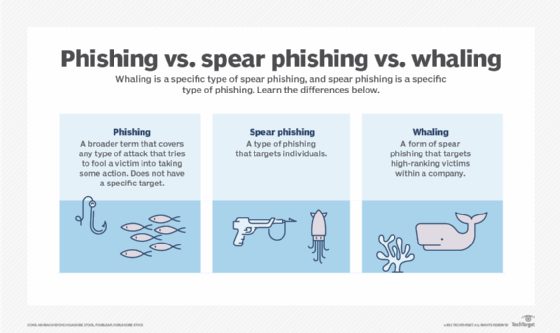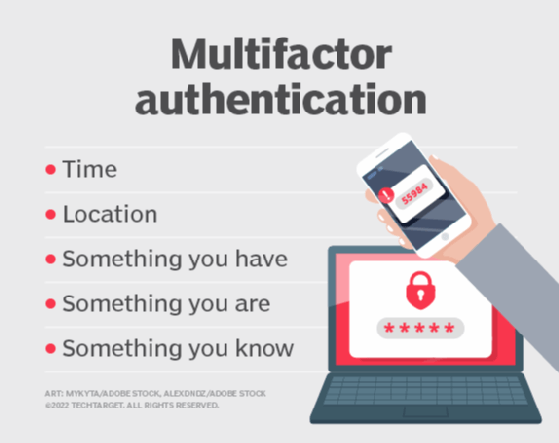cyberstalking
What is cyberstalking?
Cyberstalking is a crime in which someone harasses or stalks a victim using electronic or digital means, such as social media, email, instant messaging (IM), or messages posted to a discussion group or forum. Cyberstalkers take advantage of the anonymity afforded by the internet to stalk or harass their victims, sometimes without being caught, punished or even detected.

The terms cyberstalking and cyberbullying are often used interchangeably. Cyberstalking, however, is actually a form of cyberbullying, which -- along with cybersquatting and cyberterrorism -- is among the growing number of computer- and internet-related crimes, collectively referred to as cybercrime.
Although cyberstalking is a general term for online harassment, it can take many forms, including slander, defamation, false accusations, trolling and even outright threats. In many cases, especially when both the harasser and victim are individuals, the motive may be the following:
- monitor the victim's online -- and, in some cases, offline -- activities;
- track the victim's locations and follow them online or offline;
- annoy the victim;
- intimidate, frighten, control or blackmail the victim;
- reveal private information about the victim, a practice known as doxing; or
- gather more information about the victim to steal their identity or perpetrate other real-world crimes, like theft or harassment.
Cyberstalkers often start small. In the beginning, they may send a few strange or somewhat unpleasant messages to their intended victim. Then, later, they may brush off these messages as funny, annoying or mildly weird and ignore them without taking any action.
Over time, the messages may become systematic, sustained and repetitive and take on an increasingly intimidating or frightening tone.
Direct and indirect cyberstalking
Cyberstalking can be direct or indirect.
Perpetrators may directly email their victims or flood their inboxes with emails. Or they may harass them through IM, voicemail, texting or other forms of electronic communications. They may use technologies to surveil or follow their victims or continuously view their pages -- often without their knowledge.
Sometimes, cyberstalkers may send obscene, vulgar or offensive comments, social media follower or friend requests, or even outright threats. The stalkers may either attack the victims, which may distress them, or cause them to fear for their safety and well-being. They may also attack their victims' family or friends to expand their sphere of stalking influence.
In indirect cyberstalking attacks, perpetrators may damage the victim's device. They may do this by infecting it with ransomware to lock their files and then forcing them to pay a ransom for unlocking them. Or they may install a virus or keystroke logger that monitors the victim's digital behavior and/or steals data from the device.
A particular type of spyware called stalkerware can run on a victim's internet-enabled digital device and collect the user's actions on these devices, including emails, text messages, photographs and keystrokes.
In other indirect attacks, perpetrators may post false or malicious information about their victims online to damage their social standing or professional reputations -- a form of cybersmearing -- or set up a fake social media or forum account in their victims' names to impersonate them and post online material on their behalf.
Cyberstalking: Victims and criminals
Often, cyberstalkers pursue their victims over a sustained period. An overwhelming majority of cyberstalkers are men, while victims are usually women. However, cyberstalking cases where women were the perpetrators are not unheard of. For instance, following the 2006 Megan Meier suicide case in Missouri, a female cyberstalker was indicted and convicted in 2008 of violating the Computer Fraud and Abuse Act. Occasionally, men have been victims in some cyberstalking cases.
Victims of cyberstalking could be individuals -- mature adults, young adults and children are all susceptible -- or groups, organizations or even governments. According to the Federal Bureau of Investigation, children and adults are particularly vulnerable to one particular type of cyberstalking: sextortion.
This is when stalkers threaten a victim with the release of private or sensitive information unless the latter can meet the former's demands for sexual favors, nude photos, etc.
Consequences of cyberstalking
As part of a cyberstalking campaign, a stalker may harass a victim with content that's simply annoying or inappropriate and more of a nuisance than anything else. In more serious cases, victims may have to contend with content that's disturbing, traumatizing or threatening. They may face severe forms of online harassment, including sexual harassment and physical threats.
In almost every cyberstalking case, victims feel annoyed at best and fearful at worst. Confusion, anger and anxiety are common among victims. Some may also experience insomnia or suffer from physical ailments, like headaches, acid reflux or stomach ulcers, or mental ailments, like depression or post-traumatic stress disorder. In extreme cases, they may become suicidal.
Is cyberstalking a crime?
Cyberstalking is a crime is many countries, including the United States. However, legislation to prevent cyberstalking and to punish apprehended cyberstalkers varies from country to country and, in the case of the U.S., even from state to state.
California was the first U.S. state to pass a cyberstalking law in 1999. Other U.S. states with at least some kind of cyberstalking legislation include the following:
- Alabama
- New York
- Illinois
- Hawaii
- Arizona
- Texas
- Florida
Missouri's anti-cyberstalking law, meant to criminalize the use of the internet to harass someone, was written after the aforementioned Megan Meier case.
Since 2000, U.S. federal law specifically addresses cyberstalking under the Violence Against Women Act. The punishment for cyberstalking ranges from monetary fines to time in prison.
Other countries that have anti-cyberstalking legislation in place include the following:
- Australia
- Canada
- Philippines
- India
- Pakistan
- Nigeria
- Singapore
- South Africa
In the U.K., cyber harassment is a prosecutable crime under the Protection from Harassment Act 1997 or the Malicious Communications Act 1988. Some countries like Singapore also have laws to prosecute internet trolls.
The practice of doxing, the online publication of a user's personal and identifying data, is considered a violation of Article 8 of the European Convention on Human Rights.
How to guard against cyberstalking
Individuals can guard against cyberstalking without losing their online independence. One strategy is to stay as anonymous as possible. Of course, complete anonymity is almost impossible on the internet nowadays, so the next best thing is to keep a low profile, especially on social media.
Rather than having an identifiable and traceable online presence, use nicknames and/or gender-neutral names when possible. Avoid posting personal details, such as your email address, home address, phone number or workplace details, online, where anyone can easily access them and use them to cyberstalk. Also, guard photographs, and make sure all private information, like vacation plans, photos and posts, are visible only to trusted individuals.
Use a primary email account only for communicating with known/trusted people, and set up an anonymous email account for all other communications. Install email spam filters to minimize spam and the possibility of email-based phishing or cyberstalking attacks.

Other ways to guard against cyberstalking include the following:
- update all software to prevent information leaks;
- mask your Internet Protocol address with a virtual private network;
- strengthen privacy settings on social media;
- strengthen all devices with strong passwords or, better, use multifactor authentication;
- avoid using public Wi-Fi networks;
- send private information via private messages, not by posting on public forums;
- safeguard mobile devices by using password protection and never leave devices unattended;
- disable Geolocation settings on devices;
- install antivirus software on devices to detect malicious software;
- always log out of all accounts at the end of a session; and
- beware of installing apps that ask to access your personal information.

What to do if cyberstalked
Should an individual become the victim of a cyberstalker, it's important to take immediate action.
The most effective course of action is to report the offender to their internet service provider (ISP). Should that option be ineffective, they should change their ISP and all online names.
Block the person, even if these messages are not yet threatening. Also, report them to the platform, especially if they're harassing, stalking or threatening. Most social media platforms make it easy to report abusive behavior. These include Facebook, Twitter and LinkedIn.
If the stalking has become threatening or frightening, save evidence, and contact law enforcement. Also, minimize the amount of information that's available online and/or increase the amount of fake decoy information about you to mislead cyberstalkers.







